'A lot more breakdowns': NYC's oldest subway cars are fixed in crumbling repair shops
Jan. 21, 2025, 6:01 a.m.
MTA officials say they need to renovate or replace century-old subway repair shops before they can replace vintage train cars.
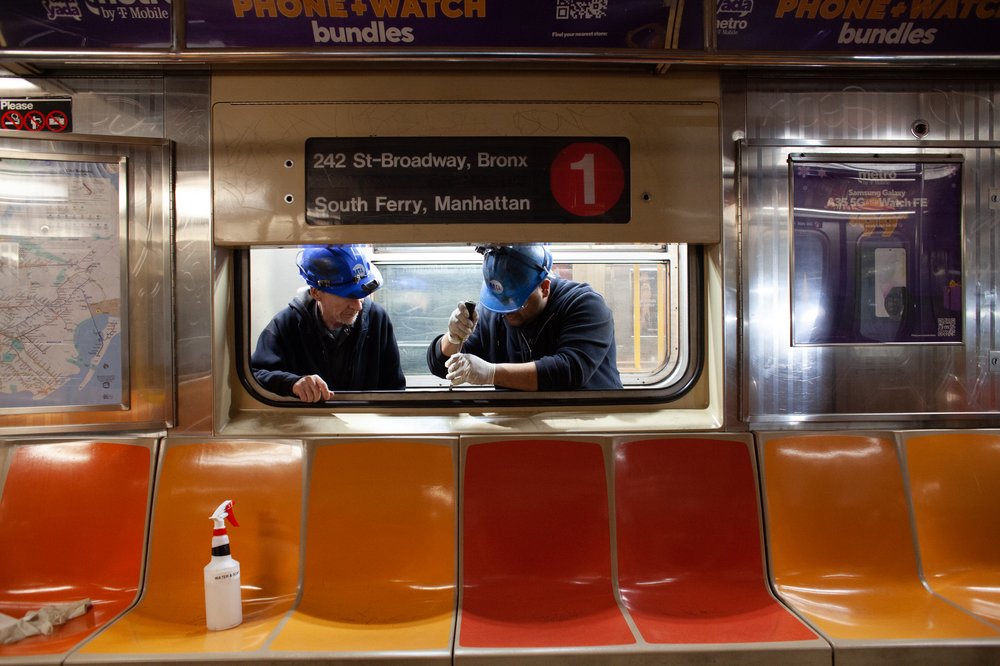
From the outside, a century-old building next to Van Cortlandt Park in the Bronx looks like an abandoned factory. But inside, MTA mechanics work in an aging maintenance shop that’s responsible for fixing every train that runs on the 1 line.
Crews at the 240th Street Yard say they don’t have enough parts, tools or space to repair the trains as fast as they break down. The cars on the 1 line date back to the 1980s, and MTA data shows they fail eight times more often than the MTA’s newest subway trains.
The facility lacks fire sprinklers and modern fire alarms. Instead, it's full of air horns in boxes nailed to the walls. If a fire breaks out, crews are instructed to run to one of the boxes and blare a horn to alert everyone else to run for safety.
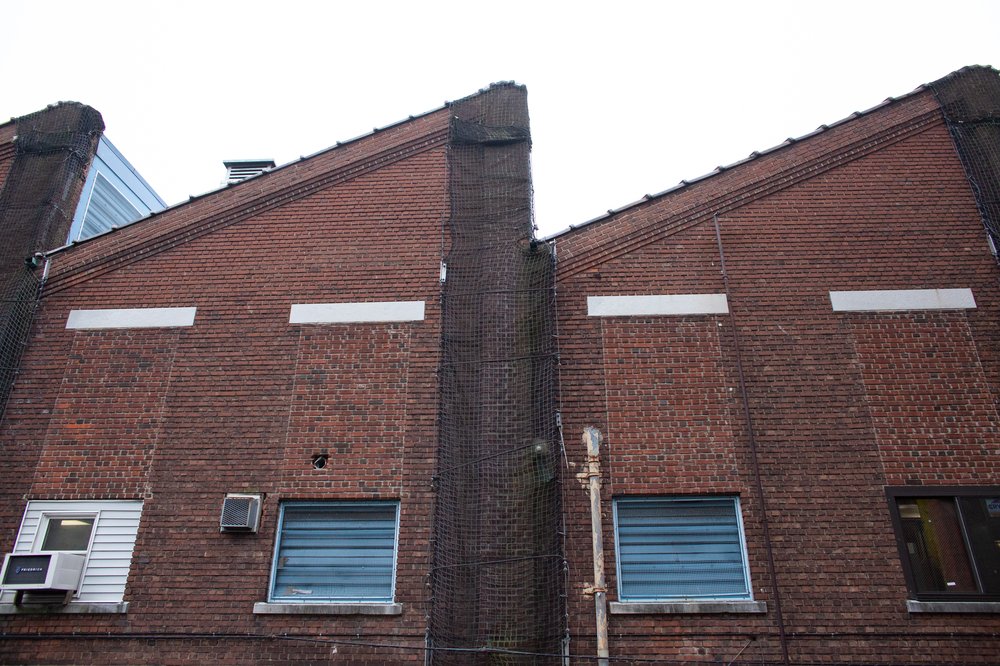
The bricks on the building’s exterior are strapped in place with metal cables and netting, which act as giant bandages that prevent its walls from collapsing.
“This building moves so much that they had to secure the building and keep it from crumbling,” said Willi Specht, a subway general superintendent.
The building isn’t subject to oversight from city regulators. The MTA is a state agency, and city Department of Buildings officials said they have no authority to enforce safety standards for facilities owned by the transit agency.
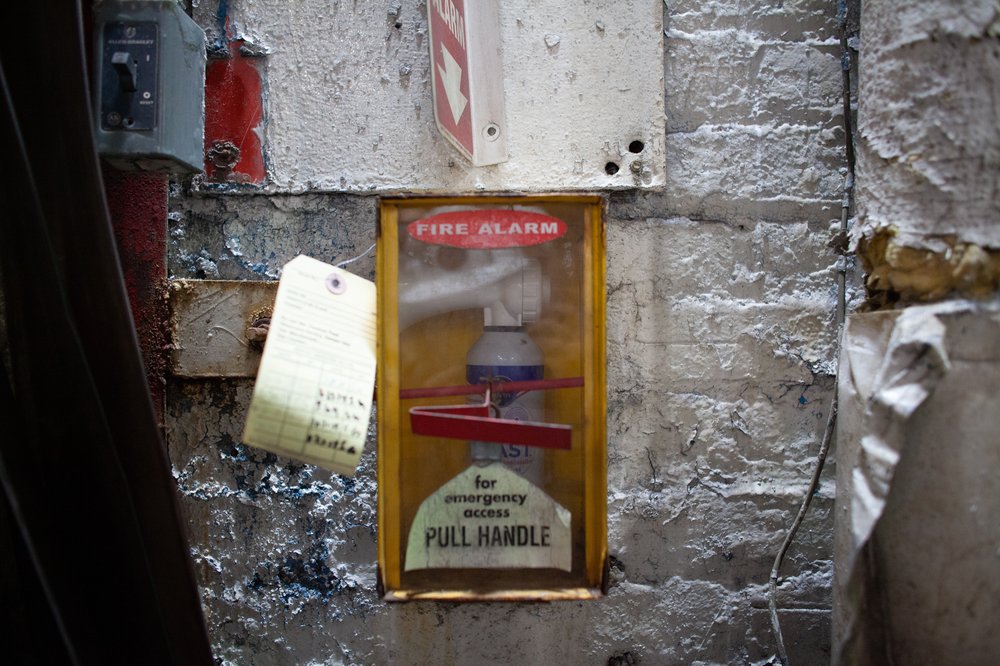
The shop at 240th Street is in such bad shape that crews struggle to put out enough working trains to run full service on the 1 line, according to Specht. The line is also notorious for running “hot cars” with broken air conditioning units during the summer
The MTA hopes to spend $7.6 billion to order 1,500 new subway cars as part of the agency’s proposed $65 billion five-year capital plan that aims to fix the city’s aging mass transit systems. The new cars would replace the city's oldest subway trains, including the ones on the 1 line. Transit officials are pleading with state lawmakers to fund the construction plan, saying it’s urgently needed to keep subway service from collapsing. The money would almost certainly need to come through new taxes.
But before they can order new trains, MTA officials say they must first renovate or replace aging maintenance shops like the one at 240th Street, which are too decrepit to handle modern subway cars. The MTA hopes to spend $1.9 billion on upgrading its train depots over the next five years.
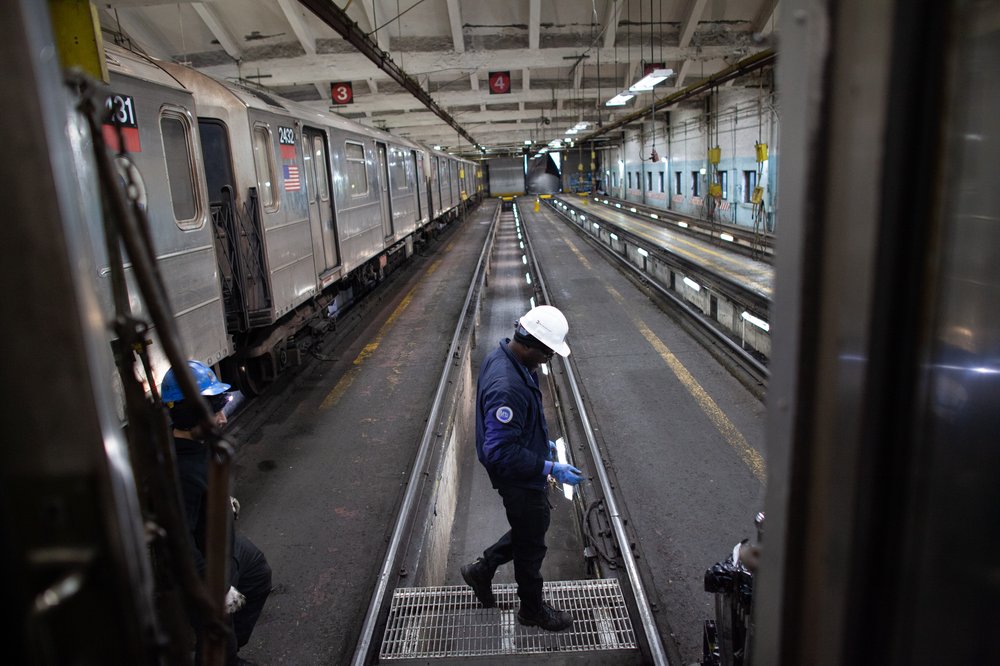
Workers at 240th Street Yard have limited space to repair 1 trains.
Mechanics at 240th Street said the facility’s cramped layout makes crucial tasks far more difficult than they should be. Crews must regularly replace air compressors, which sit underneath the trains and power the brakes on every car. Only one of the yard’s five tracks has enough space to swap out the compressors, which requires crews to crawl into a shallow pit underneath and pull the old equipment out with a forklift.
The 40-year-old trains and crumbling repair shops have downstream effects on commutes. MTA data shows delays on the 1 line caused by faulty train equipment nearly doubled during the first 10 months of 2024 compared to the same period of 2023.
“Time marches on,” said Tim Mulligan, the executive in charge of all the MTA’s train cars. “They’re machines, they don’t last forever.”
Faulty train parts and a major derailment
The problem with failing equipment on the 1 train isn’t just causing more delays — it was also central to one of New York City’s worst subway derailments this century.
On Jan. 4 last year, a vandal pulled an emergency brake handle dangling inside a 1 train, bringing it to a halt beneath the Upper West Side and setting a catastrophe in motion. The MTA crew on board had to go out onto the tracks and open valves to reset the brakes by hand — a routine procedure for transit workers. But the workers couldn’t get one of the brakes to reset after multiple attempts, according to an internal incident report obtained by Gothamist.
If the brakes had reset as designed, service would have continued as planned. Instead, the crew was instructed to remove the train from service to clear the tracks ahead of the afternoon rush.

MTA crews spent days clearing the tracks after a crash caused a 1 train to derail last January.
MTA managers decided to cut power to the train’s rear five cars and drive the whole train backwards, relying on a worker to tell the operator over the radio when to start and stop. Minutes later, the train crashed into another 1 train that was in service, causing a derailment that delayed hundreds of trains and upended commutes for New Yorkers across the city for two days.
“There were screams, there was smoke that was coming through,” recalled Michele Tyndal, a public school teacher who alleges in a lawsuit she was injured during the collision. “I was extremely afraid.”
The National Transportation Safety Board is still investigating the incident.
Eventually, the train with the faulty brake was lifted back onto the tracks and hauled back to 240th Street.
- heading
- NYC's fragile subways
- image
- image
- None
- caption
- body
This is the latest in a series on the state of New York City’s subway system. Gothamist reporters found delays and infrastructure problems are on pace to make service worse than the MTA’s “summer of hell” in 2017, when the subway’s reliability dropped to its lowest level in decades.
The MTA is asking lawmakers in Albany to fund its $65 billion construction plan, which aims to help modernize the city’s subway trains and the depots where they’re repaired.
Our reporting includes:
-A detailed look at rising subway delays — and the MTA’s struggle to fix the equipment causing the problems. Read more here.
-An investigation into the strained electrical systems that power the subway, which rely on 1960s technology and frequently explode. Read more here.
-A dispatch from a subway signal room in downtown Brooklyn, where trains are directed on and off the Manhattan Bridge by technology that was invented when Franklin Delano Roosevelt was in the White House. Read more here.
The repair shops are in disrepair
The state of the Bronx yard is the rule, not the exception. The MTA’s data shows 73% of the building structures at its 17 subway shops are in poor or marginal condition.
MTA officials say the Livonia Yard in East New York, which services trains that run on the 3 line, is in even worse shape than the one at 240th Street.
That building’s roof leaks and crews complain of rat infestations in break rooms. Peter Stolarski, the yard’s superintendent, said the shop is constantly running out of replacement parts for 3 trains, so crews “cannibalize” parts by stripping functioning equipment off otherwise broken train cars.
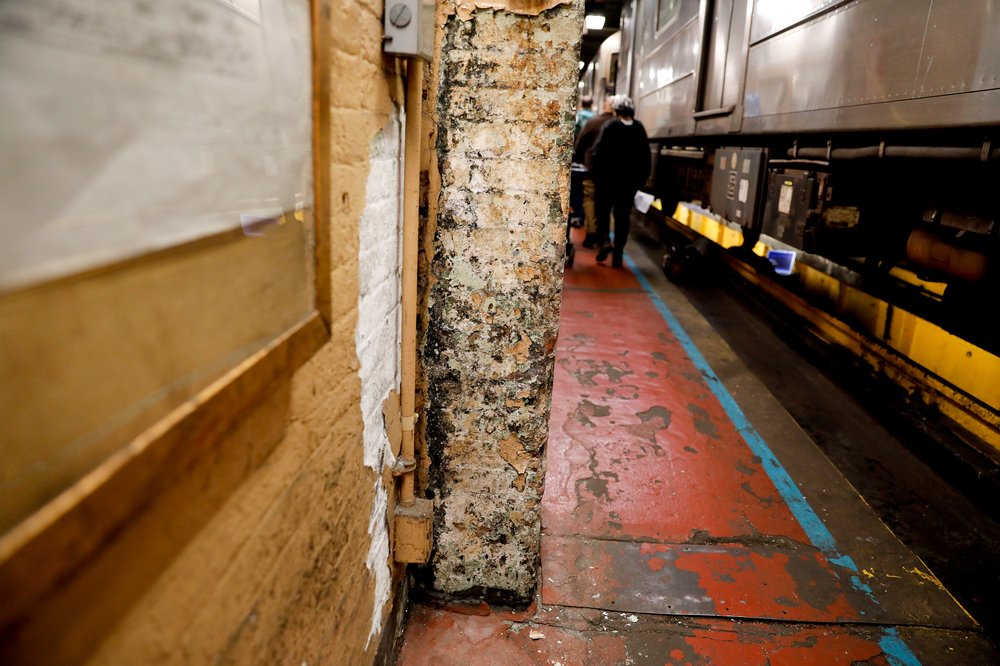
“Instead of the two hours that I could be using to fix another train, I’m spending two hours taking apart a train,” Stolarski said.
If the MTA were to order new train cars for the 3 line, Livonia wouldn’t be able to take them in. Unlike the subway’s train cars from the 1980s, new models have heating and air conditioning units on the roof. Mechanics need cranes to remove and maintain those units — but officials said the ceilings at Livonia Yard are too shallow to allow for cranes. That means the entire building must be replaced or overhauled before riders on the 3 line can commute on modern subway cars.
Aimee Thomas, the representative at Livonia Yard for Transport Workers Union Local 100, which represents a majority of the MTA’s workforce, said worker morale is dwindling because crews are left with old gear and an old facility to work in — especially women, who are limited to two toilets and a locker room the size of a storage closet.
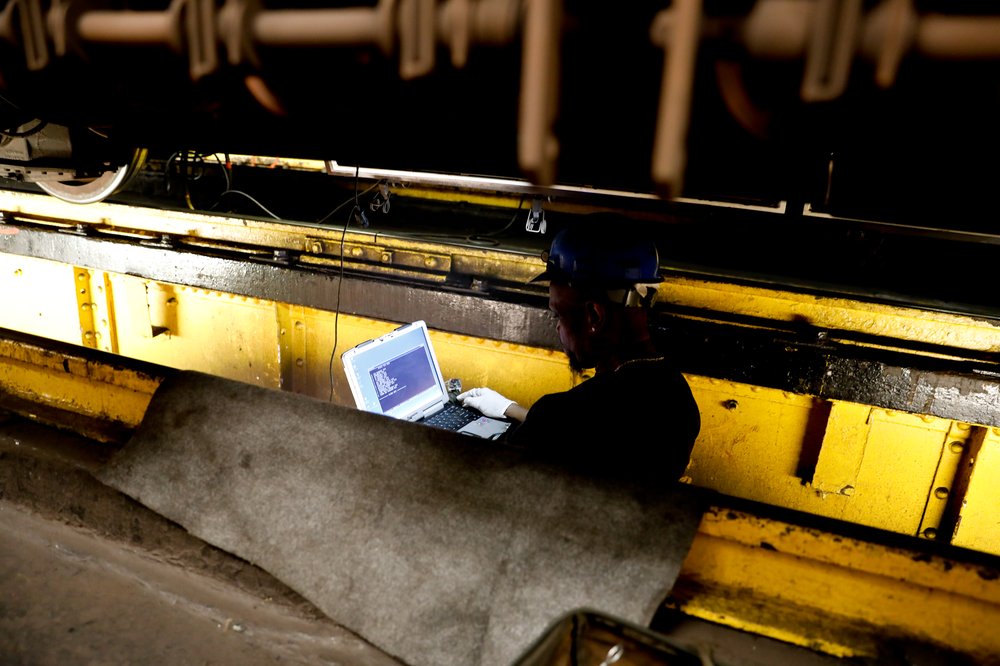
She said the facility used to be more successful at keeping trains in service before they needed to be fixed.
“Being here 19 years, I see a lot more breakdowns. Before we had the parts, way better service,” Thomas said. “That’s not possible no more.”
A state of collapse: How the MTA put riders on the fast track to ruin MTA pitches $65.4 billion capital plan to save mass transit in NYC